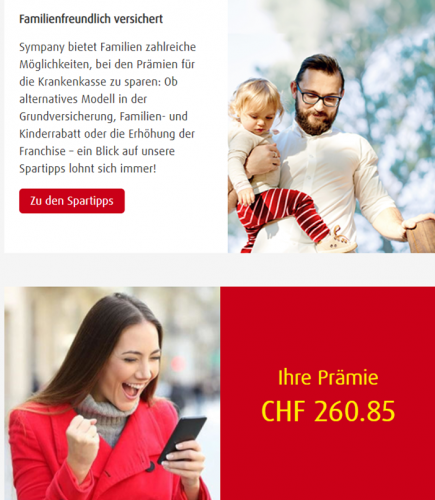To maximize the success of an email campaign, address segmentation is becoming increasingly important. Due to the constantly increasing number of mailings, it is essential to provide subscribers with relevant content tailored to their needs. Particularly in the area of acquiring new customers, dividing leads into groups is a best practice.
In the present campaign “Lead segmentation by means of an interactive competition” of the health insurance company Sympany, which was implemented in summer 2020, the interests of the recipients could be addressed thanks to targeted messages in a competition.
Segment generated addresses via a sweepstake
The focus of the project for Sympany was to acquire new customers from families. The campaign, which centered on an interactive sweepstakes, was designed to segment the pre-generated addresses into clusters based on the participation options. By offering a choice of prizes based on the different ages of the children in a family, participants were given the feeling that Sympany takes its customers seriously and is aware of the different interests of families.

In the next step, selection-specific information was sent; the third approach was to address and convince the leads developed in the meantime with offers tailored to the clusters. As a basis for the campaign, a large number of e-mail addresses were generated via various touchpoints. The contact points were deliberately chosen where families are found in majority. The segmentation process centered on the interactive mailing with the aim of dividing the recipients into groups of potential new customers via the content of the competition.
The following three segments were defined:
- Cluster 1: Families with babies or existing desire to have children (0-3 years)
- Cluster 2: Families with young children (4-12 years)
- Cluster 3: Families with children in middle to adolescent age (13 years and older)

A competition was launched to assign the addresses to the appropriate cluster. Participants could choose one of three prizes, represented in three different age groups of children. Based on the prize selection, the assignment to the clusters was made. As a special feature and instead of a landing page, the competition was implemented directly in the mail. The choice of the desired prize as well as the acceptance of the conditions of participation were therefore made in the mailing itself. As a result, a media break via a separate page was avoided. Causally related cancellations could be prevented or reduced to a minimum.
Deliver personalized content and offers
Following participation in the competition, the next step was to send out an information newsletter manually for each segment. This mailing contained topic-specific advice as well as concrete benefits from Sympany. Individual content was developed for each cluster to increase the relevance of the content and boost interest.

For the target group baby
For target group children and teenagers

In a third and final step, the health insurance company was able to respond to the prospective customers with personalized offers tailored to their place of residence and selected age group and encourage them to make a purchase. Conversion was significantly strengthened. In the future, it is conceivable that the entire process of the three mailings could be automated.

Increase complexity
In another campaign, Sympany opened up various interactive options of consulting appointments in an e-mail based on the recipient’s selection of a specific offer. This enabled the recipient to make a direct selection at this point. The workflow was immediately developed further to the next decision phase in order not to lose the interested party.
Implementation is technology neutral
Such campaigns can be integrated into any dispatch technology (ESP). The starting point is an HTML code, which in the future will be generated by Mayoris via a central platform, www.mailix.com, and configured according to the customer’s needs. ESP integration is done via custom widgets, API or manually. This depends heavily on the capabilities of the specific ESP. New widgets and API connections are developed in each case as part of initial customer projects with the respective providers.
Advantages
- Optimal UX factor thanks to interactive email without media discontinuity
- Segment-specific targeting of potential new customers
- Behavioral lead segmentation


